UPSC Daily Current Affairs- 19th May 2024 | Current Affairs & Hindu Analysis: Daily, Weekly & Monthly PDF Download
GS-I/Geography
Mumbai billboard collapse: Why cities need to gear up for ‘multi-hazard weather events’
Source: Indian Express
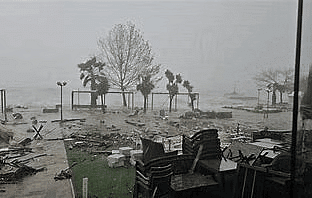
Why in News?
Earlier this week, a massive billboard collapsed in Mumbai due to a localized dust storm and rain, resulting in the deaths of 16 people and injuring over 75 others.
What happened in Mumbai?
Pre-monsoon thunderstorm in Mumbai:
- On May 13, 2024, Mumbai was hit by a pre-monsoon thunderstorm from 3 pm to 4 pm.
- The storm commenced with a dust storm followed by widespread rainfall across the city and its suburbs.
- Wind speeds ranged from 40 kmph to 90 kmph during the event.
- The Santacruz weather station recorded a peak wind speed of 87 kmph, while Colaba recorded 51 kmph.
Extensive Damage:
- The high winds caused significant destruction to various infrastructures including railways, banners, hoardings, and trees.
- A massive billboard measuring 120×120 feet in Ghatkopar (east) collapsed due to the storm.
- This collapse led to the tragic loss of 16 lives and left over 75 others injured.
How do thunderstorms develop and are they becoming more intense?
- Common Natural Phenomena During Peak Summer:
- Thunderstorms and dust storms are typical occurrences during the peak summer and pre-monsoon periods.
- These phenomena are fueled by persistent surface heating and favorable wind conditions.
- Characteristics of Thunderstorms:
- Thunderstorms usually develop in the late afternoon and evening.
- They form rapidly and dissipate quickly.
- Impact of Rising Global Temperatures:
- Increasing global temperatures are contributing to more intense and frequent thunderstorms.
- Warmer temperatures result in a higher moisture capacity in the atmosphere, leading to stronger storms.
- Expert Opinion:
- M Rajeevan Nair, former secretary of the Ministry of Earth Sciences, suggests that the heightened moisture capacity can indeed result in more robust storms.
What are climate and weather-related hazards?
- Climate and Weather-Related Hazards:
- Meteorological events pose significant threats to human life, property, and animals.
- The India Meteorological Department (IMD) has identified 13 categories of such hazards.
- Categories of Hazards:
- These include dust storms, thunderstorms, hailstorms, cyclones, drought, extreme rainfall events, floods, fog, lightning, snowfall, heatwaves, coldwaves, and strong winds.
- Impacts of Hazards:
- These events can result in fatalities, displacement of populations, property damage, livestock deaths, crop damage, and extensive infrastructure damage.
What is the impact of such events on human life?
- According to the National Crime Records Bureau (NCRB) 2022 report, India witnessed 8,060 accidental deaths in 2021 attributed to natural events. Lightning emerged as the primary cause, responsible for 35.8% of these fatalities, totaling 2,887 deaths. Other notable contributors were floods, resulting in 547 deaths, landslides causing 269 deaths, exposure to cold claiming 720 lives, and heat stroke leading to 730 deaths.
Way Forward
The collapse of the Mumbai billboard emphasizes the necessity of climate-proofing infrastructure in densely populated urban areas. Urban planning must incorporate considerations for multi-hazard events, particularly in coastal cities like Mumbai, which are vulnerable to a variety of weather-related threats.
Regular reviews and updates of building codes and standards are essential to ensure they adequately address the risks posed by local weather phenomena. By improving early warning systems and disaster preparedness plans, the impact of such events on human life and property can be mitigated.
GS-I/Art and CultureWas the Stone Age actually the Age of Wood?
Source: Indian Express
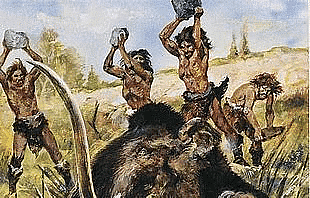
Why in News?
New research suggests the Stone Age be termed the “Wood Age” due to advanced wooden tools found in Schoningen, Germany.
About Schoningen Wooden Artefacts
- A study of around 300,000-400,000-year-old wooden artefacts excavated from a coal mine in Schoningen, Germany, between 1994 and 2008.
- It reveals that these were not merely “sharpened sticks” but “technologically advanced tools” requiring skill, precision, and time to build.
- The tools demonstrated a broad spectrum of wood-working techniques including splitting, scraping or abrasion.
Use of Wood: Preservation Bias and Archaeological Evidence
- Insight from Stone Tools:
- Stone tools provide valuable understanding of early human capabilities and lifestyles.
- Charles Darwin recognized that even the simplest stone tools required significant mental and physical prowess.
- Use of Other Materials:
- Evidence indicates the use of bones, antlers, clay, and some metalworking alongside stone tools.
- However, woodworking evidence is sparse due to the perishable nature of wood.
- Limited Evidence of Wood Use:
- Wood findings are rare in Lower Palaeolithic sites, representing less than 10 out of thousands.
- The earliest evidence of wooden structures dates back to 700,000 BP, much later than the earliest stone tools.
GS-II/Polity and Governance
Rules for Political Parties to Use State Funded Media During Polls
Source: Times of India

Why in News?
In the run-up to the ongoing Lok Sabha elections, two opposition leaders were asked to modify specific parts of their speeches that they had made on Doordarshan and All India Radio (AIR) during the allotted broadcast time.
- Prasar Bharati is India’s state-run public broadcaster and the parent organisation of Doordarshan and AIR.
What Changes were Asked from the Opposition Leaders?
- The CPI (Marxist) General Secretary Sitaram Yechury had to delete references to the electoral bond scheme, drop terms “communal authoritarian regime” and “draconian laws”, and replace “bankruptcy” (of governance) with “failure”.
- On the other hand, the All-India Forward Bloc (AIFB) leader G Devarajan was made to remove the word “Muslims” from his speech about the Citizenship Amendment Act.
- According to a Prasar Bharati official, the TV and radio networks were simply following rules set by the Election Commission of India (ECI).
How ECI Allocates Time to Each Recognised Party for Public Broadcasting During Elections?
Allocation of Time Since 1998:
- Recognized political parties have been granted the liberty to use state-owned television and radio during elections since the 1998 Lok Sabha elections.
- The Election Commission of India (ECI) determines the amount of time allotted to each recognized national and state party before the start of the election campaign.
Amount of Time Allotted:
- All national parties combined receive a minimum of 10 hours of telecasting time on Doordarshan's national channel and at least 15 hours on its regional channels.
- They also receive 15 hours of airing on regional All India Radio (AIR) stations and 10 hours on the national AIR.
- Similarly, all state parties combined are entitled to a minimum of 30 hours of telecasting time on the relevant regional Doordarshan channel and AIR radio station.
Time Allocation for 2024 Lok Sabha Elections:
- The ECI distributed broadcast and telecast time among the six national parties and 59 state parties for the 2024 elections.
- National parties were allotted 4.5 hours (45 minutes each) on both Doordarshan and AIR, out of the prescribed 10 hours.
- The remaining 5.5 hours were allocated based on their vote share in the 2019 Lok Sabha elections.
- Similar criteria were employed for allocating time to state parties.
- For instance, CPI (M) received 54 minutes each on Doordarshan and AIR, while AIFB was allotted 26 minutes each on both media platforms.
What are the ECI’s Guidelines on Speech Contents for Public Broadcasting During Elections?
Parties and their designated speakers are required to submit transcripts of their speeches to the concerned authorities at the respective All India Radio (AIR) and Doordarshan stations three to four days prior to recording. These transcripts must undergo approval before broadcasting.
The guidelines strictly prohibit several elements in these speeches:
- Criticism of other countries.
- Attacks on religions or communities.
- Any content considered obscene or defamatory.
- Incitement of violence.
- Remarks amounting to contempt of court.
- Attacks against the integrity of the President and judiciary.
- Content that jeopardizes the unity, sovereignty, and integrity of the nation.
- Criticism directed at individuals by name.
What are the Concerns Raised by the Opposition Leaders?
CPI(M) Leader's Perspective:
- The CPI(M) leader views the censorship of his speech as a blatant infringement on the democratic right to dissent.
- Removing the term 'bankruptcy' from his text and substituting it with 'failure' is seen as endorsing the authoritarian nature of the government.
AIFB Leader's Viewpoint:
- The AIFB leader asserts that he advocated for the inclusion of the term 'Muslim' in his speech, albeit unsuccessfully.
- He argues that the Citizenship Amendment Act (CAA) discriminates against Muslims by explicitly mentioning eligibility for citizenship for every other minority community except Muslims.
GS-II/International Relations
Russia - China Summit
Source: Indian Express
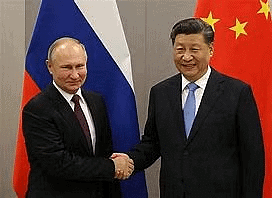
Why in News?
Recently, President Vladimir Putin arrived in Beijing for a two-day state visit. During this visit, he met with President Xi Jinping at the historic Great Hall of the People, seat of power of the Chinese Communist Party. Both the leaders signed and issued a joint statement on deepening China-Russia comprehensive strategic partnership of coordination for a new era. Both leaders pledged to deepen their strategic partnership. This was Putin’s first international visit since the start of his fifth presidential term.
China – Russia friendship
- Historical Background of China-Russia Relationship:
- The initial relationship between China and the Soviet Union had a rocky start.
- Mao Zedong, upon visiting Moscow in 1949, faced delays in meeting Joseph Stalin, indicating strained ties.
- Throughout the Cold War, the two nations were adversaries, vying for dominance within the global communist movement.
- Tensions escalated in the early 1960s, culminating in a brief border conflict in 1969.
- Relations began to thaw after Mao's death in 1976 but remained chilly until the Soviet Union's collapse in 1991.
- Shift in Relationship Dynamics:
- Post-Cold War, economic ties became the cornerstone of Sino-Russian relations.
- China emerged as Russia's principal trading partner and the largest Asian investor in the country.
- China sees Russia as a crucial source of raw materials and a lucrative market for its consumer goods.
- Western hostility towards Russia, particularly after the annexation of Crimea in 2014, drew Moscow and Beijing closer together.
- Nature of Relationship According to Leaders:
- Leaders from both nations emphasize that their relationship is not opportunistic and not directed against any other party.
- President Xi Jinping describes the China-Russia friendship as enduring and exemplary of a new type of international relations.
- In contrast, a White House spokesperson characterizes the China-Russia relationship as a marriage of convenience.
Relationship against the backdrop of the Ukraine War
- Strategic Partnership Between China and Russia:
- China and Russia formalized a no-limits strategic partnership shortly before Russia's invasion of Ukraine on February 24, 2022.
- This partnership has raised concerns in the West, particularly in the United States.
- Concerns Regarding China's Role in the War:
- The US is apprehensive about China's involvement in the conflict.
- There are allegations that China is providing technology to Russia for the production of missiles, tanks, and other military equipment.
- Increased Imports from China to Russia:
- Russia's imports of dual-use items such as machine tools and computer chips from China have seen a significant rise.
- There has been a notable increase in the sales of Chinese logistics equipment, including lorries for troop transportation and excavators for trench digging, to Russia since the onset of the war.
China – Russia friendship: concerns for India
- Implications of the Russia-China Defence Axis for New Delhi:
- The growing alliance between Russia and China raises significant concerns for New Delhi.
- India heavily relies on Russia for approximately 60-70% of its defence supplies and requires consistent and dependable provisions, especially amidst ongoing border tensions with China.
- Concerns of Indian Analysts:
- Indian experts are apprehensive about the possibility of Russia becoming a subordinate ally to China.
- There are concerns regarding Russia's stance in the event of a conflict between India and China, given the uncertainty surrounding Moscow's response.
- Historical Context:
- During the 1962 war between India and China, the Soviet Union did not support India, while it backed India during the 1971 conflict.
- However, the contemporary Russian leadership under Vladimir Putin differs from the former Soviet Union, potentially leading to a different approach in similar situations.
GS-III/Economy
Indian manufacturing needs more sophistication: Finance Minister
Source: The Hindu
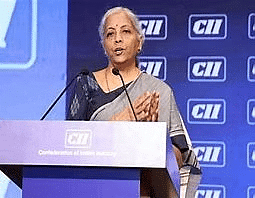
Why in News?
Nirmala Sitharaman stated that India’s demographic dividend, characterised by the lowest dependency ratio, will boost consumption and create investment opportunities worth trillions of dollars.
What is the dependency ratio?
- The dependency ratio is a measure that compares the number of dependents (people who are either too young or too old to work) to the working-age population.
What is a Demographic Dividend?
- According to the United Nations Population Fund (UNFPA), the demographic dividend is the economic growth potential that arises from changes in a population’s age structure, particularly when the proportion of the working-age population (15 to 64 years) surpasses that of the non-working-age groups (those aged 14 and younger, and 65 and older).
About India’s demographic dividend
- According to the Economic Survey 2018-19, India’s Demographic Dividend will peak around 2041, when the share of working-age,i.e. 20-59 years, population is expected to hit 59%.
- Demographic Dividend: India’s young population and low dependency ratio will persist for the next 30 years, offering a significant advantage in terms of labour force and consumption.
What are the opportunities for India?
- Increased Investments in Manufacturing:
- U.S. and European companies are planning to boost manufacturing investments in India to reduce reliance on China, according to the Capgemini Research Institute report.
- Policy Support for Manufacturing Enhancement:
- The Indian government is considering providing policy support to elevate the sophistication of Indian manufacturing, with the goal of enhancing India's share in global manufacturing and value chains.
- Growth in the Consumer Market:
- India's consumer market is projected to double by 2031, presenting a $2.9 trillion opportunity.
- Significant sectoral growth is expected, particularly in the food sector with projected spending reaching $1.4 trillion and financial services reaching $670 billion.
- Investment and Expansion Plans:
- Both corporates and banks possess healthy balance sheets, positioning them well for investment and expansion, thereby driving economic growth.
- The government's stable policy approach, corruption-free decision-making, and responsive legislative and legal frameworks create a favorable environment for business growth.
- Partnership with the Private Sector:
- The government views the private sector as a development partner and aims to facilitate and enable business activities.
- Post-election, the government plans to engage with industry stakeholders, such as the Confederation of Indian Industry (CII), to implement supportive measures in the upcoming budget.
- Opportunities in Specific Sectors:
- Emphasis on encouraging sophisticated and innovative manufacturing processes, increasing participation in global value chains, and investing in infrastructure to support industrial growth.
- Economic Projections:
- S&P Global Market Intelligence forecasts trillions of dollars in opportunities in the Indian market by 2031, highlighting the potential for significant economic growth and investment.
- Need for Skilling:
- There is a strong focus on ramping up skills in the Indian workforce to leverage the demographic advantage.
- Skilling initiatives are essential to ensure that the working-age population possesses the necessary competencies to meet the demands of modern industries, particularly in sectors projected for substantial growth like food spending and financial services.
Way forward:
- Expand Skill Development Missions: Strengthen and expand initiatives like the Pradhan Mantri Kaushal Vikas Yojana (PMKVY) to cover more sectors and regions.
- Industry-Academia Collaboration: Foster partnerships between educational institutions and industries to create industry-relevant curriculum and training programs.
GS-III/Science and Technology
Plunging Region of a Black hole
Source: Times of India
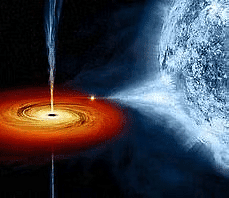
Why in News?
A strange area around black holes called the “plunging region” has been spotted for the first time.
- A black hole is a cosmic entity characterized by extremely intense gravity, so powerful that nothing, not even light, can escape from it. This gravitational intensity results from a large amount of matter being compressed into a very small space.
Formation:
- Black holes can form from the death of massive stars.
- When such a star exhausts its internal nuclear fuel, its core becomes unstable and collapses inward, while its outer layers are expelled.
- The collapsing matter is compressed to a point of zero volume and infinite density known as the singularity.
Event Horizon:
- The event horizon is the boundary surrounding a black hole beyond which no light or radiation can escape.
- Once an object crosses this boundary, it becomes trapped by the black hole's gravity.
Plunging Region of a Black Hole:
- This area marks where matter ceases to orbit a black hole and instead falls directly inwards.
- Predicted by Albert Einstein's theory of general relativity.
- When matter approaches a black hole, it is torn apart and forms an accretion disc around it.
- General relativity suggests that there should be an inner boundary to this disc, beyond which matter cannot orbit and instead plunges towards the black hole at near light speed.
- This region, known as the "plunging region," lies just outside the event horizon.
- Studying plunging regions could provide insights into black hole formation, evolution, and the fundamental nature of space-time.
GS-III/Science and Technology
Dyson Sphere
Source: BBC

Why in News?
Recently, an international team of researchers based in Sweden, India, the US, and the UK have devised a way to search for unimaginably complex extraterrestrial megastructures, known as Dyson spheres.
About Dyson Sphere:
A Dyson sphere is a theoretical engineering project that only highly advanced civilizations could potentially construct. It is a concept proposed by physicist and astronomer Freeman J. Dyson in 1960, envisioning a solar-system-sized shell composed of a "swarm of objects" orbiting a star, such as our sun. This hypothetical structure would allow a civilization to harness all of a star's energy to meet its technological needs.
Functionality of Dyson Spheres:
- Dyson spheres are designed to capture and utilize the energy emitted by a star to power the advanced technologies of a civilization.
- By surrounding the star with a shell or swarm of objects, the civilization could maximize its energy output.
Search for Dyson Spheres:
- Dyson spheres are considered a type of technosignature, which could indicate the presence of intelligent beings in the universe.
- Earth-based researchers have scanned infrared maps of the night sky in search of signs of Dyson spheres, as they would emit infrared radiation due to their construction.
- However, no conclusive evidence of Dyson spheres has been found thus far.
Implications of Discovery:
- Discovering a Dyson sphere would have profound implications for our understanding of extraterrestrial civilizations and their capabilities.
- It could provide insight into the technological advancements and energy needs of advanced alien societies.
Current Status:
- Despite ongoing searches, no concrete evidence of Dyson spheres has been detected, leaving their existence as a fascinating but unproven aspect of theoretical astrophysics.
|
63 videos|5408 docs|1146 tests
|
FAQs on UPSC Daily Current Affairs- 19th May 2024 - Current Affairs & Hindu Analysis: Daily, Weekly & Monthly
| 1. Why is it important for cities to gear up for 'multi-hazard weather events' like the Mumbai billboard collapse? |  |
| 2. Was the Stone Age actually referred to as the Age of Wood? |  |
| 3. What are the rules for political parties to use state-funded media during polls? |  |
| 4. What were the key outcomes of the Russia-China Summit? |  |
| 5. Why does Indian manufacturing need more sophistication, according to the Finance Minister? |  |
















